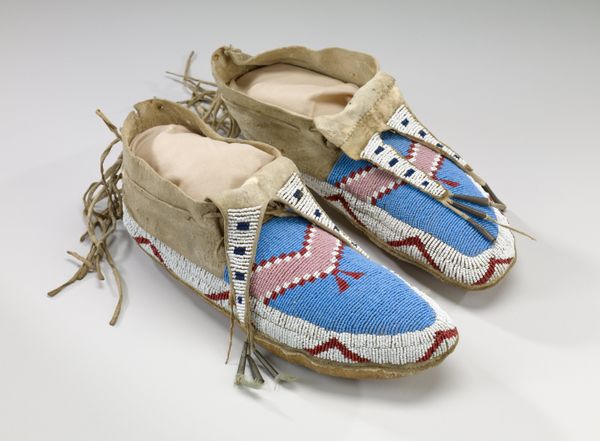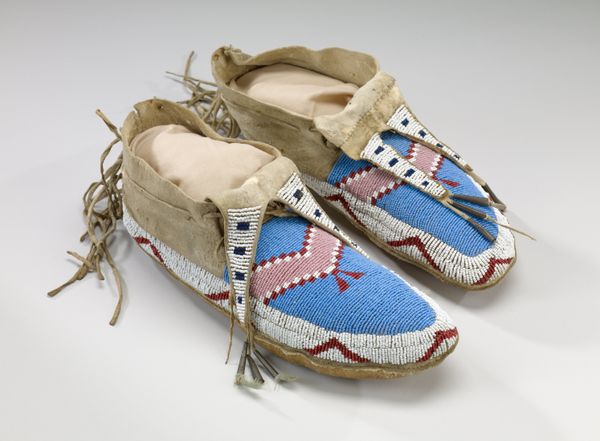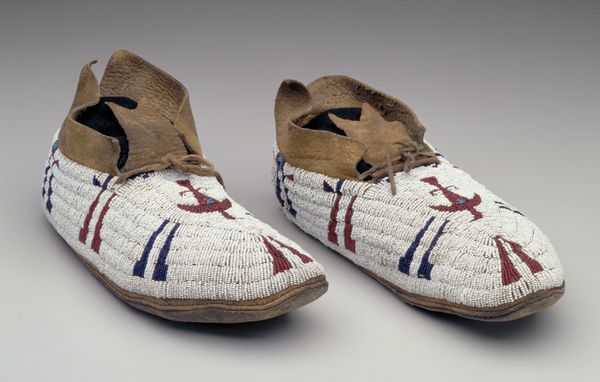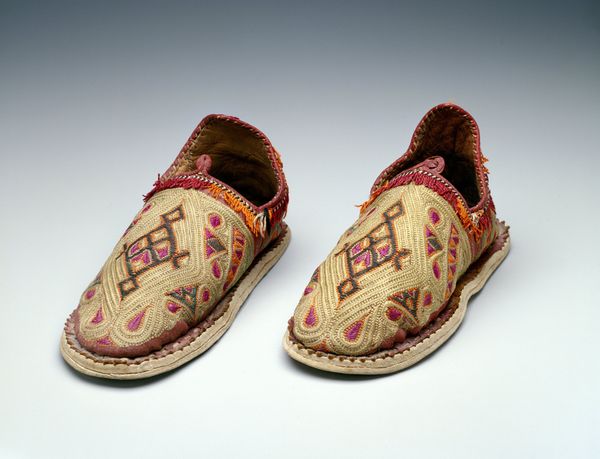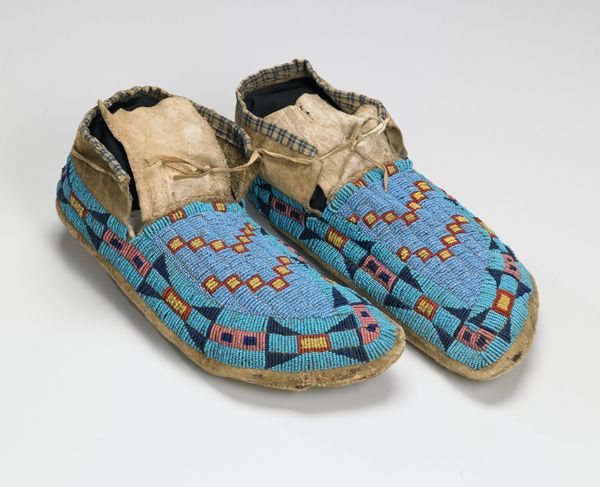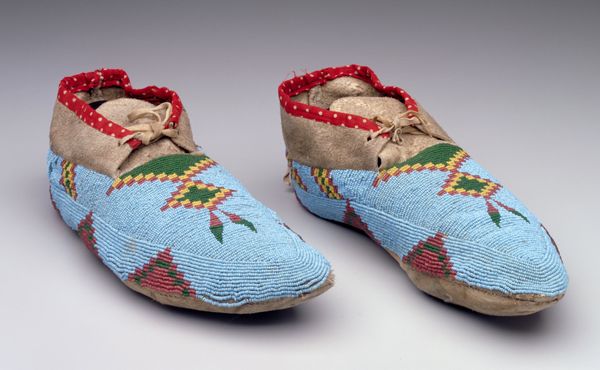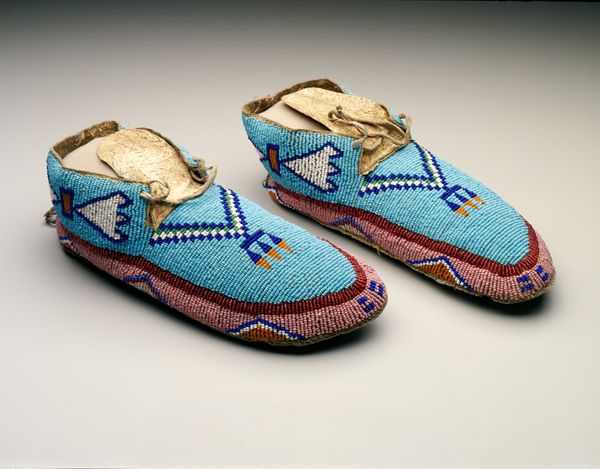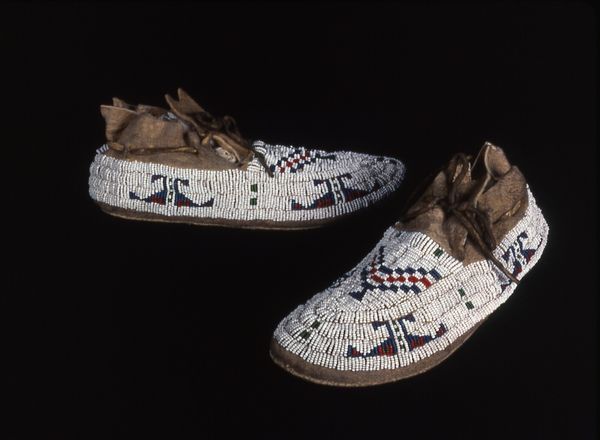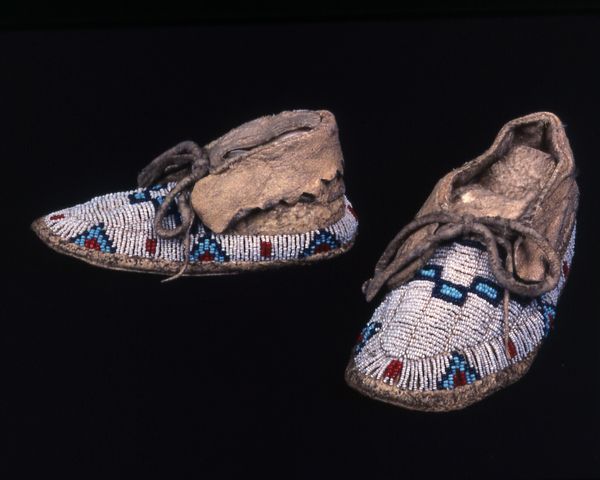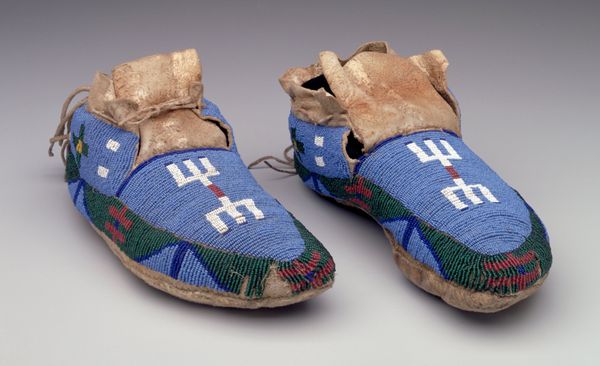
fibre-art, textile
#
fibre-art
#
textile
#
folk-art
#
decorative-art
#
indigenous-americas
Dimensions: 9 x 3 1/2 x 3 3/4 in. (22.86 x 8.89 x 9.53 cm) (a, left)9 1/4 x 3 3/4 x 3 1/2 in. (23.5 x 9.53 x 8.89 cm) (b, right)
Copyright: Public Domain
Editor: These moccasins, crafted around 1900 by Nuxbaaga of the Hidatsa people, strike me as incredibly intricate, especially given the texture and combination of materials. What does this textile work tell you? Curator: It speaks to the ingenuity and labor invested in everyday objects. The materials - leather, beads, perhaps sinew for stitching - each had to be sourced and processed. The application of the beads is a testament to a skilled hand, reflecting time, effort and a knowledge base handed down across generations. Consider also the trade networks, potentially involved in procuring the beads themselves. Editor: That's interesting; the use of these intricate materials in something worn on the feet feels both functional and deeply symbolic. What does the detail suggest beyond sheer practicality? Curator: Functionality and aesthetics are not mutually exclusive here. The decoration might signify social status, tribal affiliation, or even spiritual beliefs tied to the act of walking, hunting or the land. The colors, the patterns—were they traditional or influenced by trade and changing tastes? Were these made for personal use, or for trade with outsiders? These questions of intention and usage change how we look at the construction of the object. Editor: So the act of creating is just as important as the final product itself? Curator: Absolutely. A materialist approach encourages us to move beyond mere appreciation of visual appeal and explore the social and economic forces that shaped the very making of the piece. Editor: I never really thought about folk art this way before, and you’ve helped to completely shift my perspective, moving beyond a simplistic interpretation and instead thinking about the network of production involved! Curator: I'm glad. Considering the production means helps us avoid romanticizing such objects and prompts thoughtful engagement with their full context.
Comments
minneapolisinstituteofart almost 2 years ago
⋮
Three tribes, the Hidatsa, Neuida (Mandan), and the Sahnish (Arikara), historically lived along the Missouri River in what is now North Dakota, and played a major role in trade on the northern Plains. Now living on the Fort Berthold Indian Reservation, near their traditional lands, these tribes were influential because they inhabited a region where white traders, explorers, and tribes from the east, would visit and exchange goods; which would later be traded to the other tribes west. Because of their economic security, the Hidatsa devoted more time to develop their artistic style, and are known for creating some of the finest quillwork across the plains.
Join the conversation
Join millions of artists and users on Artera today and experience the ultimate creative platform.
